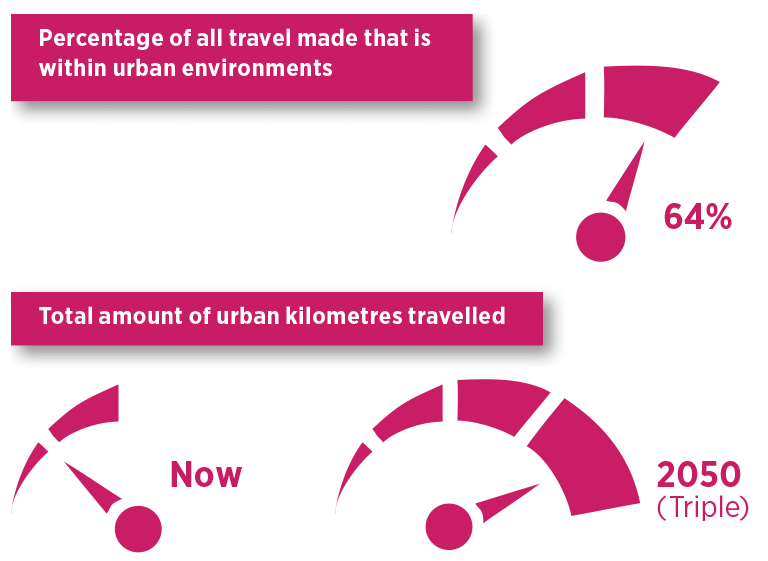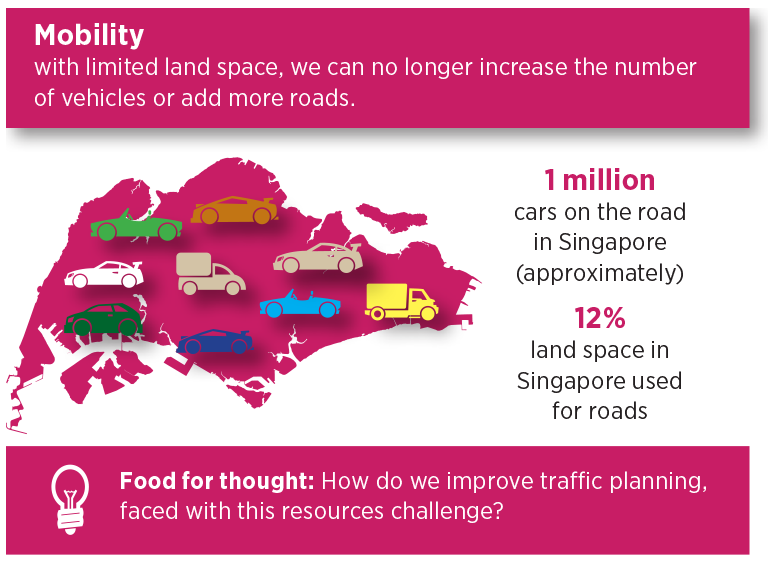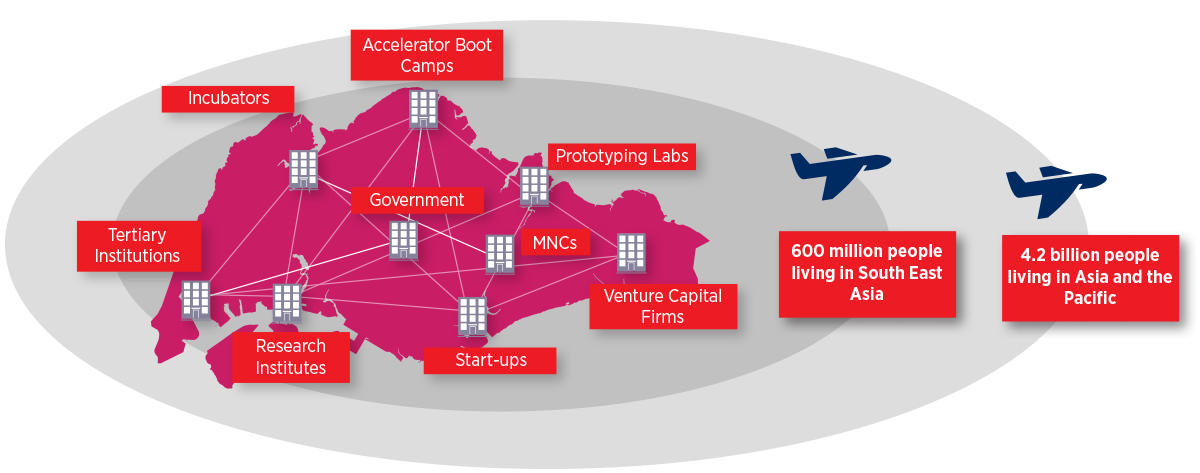Why does a Smart Nation matter?
Singapore, a tech innovation hub, is tackling tomorrow’s big challenges today
By Melissa de Villiers, Editor Group
Topping global league tables isn’t exactly a new state of affairs for Singapore. For the past eight years, the country has ranked first for ease of doing business in the World Bank’s related index. It’s also been recognised as the world’s fastest broadband nation by Ookla and the top and fastest-changing digital economy, according to Tufts University. Now, however, there’s a new label to add to the country’s impressive list of accolades and that’s the world’s first ‘Smart Nation’.
Why Smart Nation? While various cities around the world are experimenting with ‘smart city’ technologies to tackle issues such as street lighting, waste collection and traffic light management, Singapore has a much more ambitious and whole-of-nation vision.
This vision involves pulling together its world-ranked universities and medical facilities, multi-billion annual research and development (R&D) investments, a fast-growing community of tech start-ups and large pools of investment capital. It also centres on the government and private sectors using technology holistically to bring about better lives and greater business opportunities.
Why now?
What’s the drive behind this new direction? The answer is the need to be forward-looking to anticipate the megatrends that will impact Singapore and the world, and acknowledging the need to act right now to ensure the nation is well positioned for the future.
Like many other nations, Singapore also faces challenges such as an ageing population and urban density which require a smart response. Singapore is the world’s third most densely populated nation, with nearly 8,000 people per square kilometre. And that’s only expected to rise: global trends indicate two-thirds of the world would have migrated into cities by 2050.
Meanwhile by 2030, the number of elderly people aged 65 years and above in Singapore is expected to triple to 900,000 (a 1 in 5 ratio). Those individuals will be supported by a smaller working-age population. These trends will add pressure to the healthcare system, transport networks and ability to use resources such as energy, food and water sustainably.
The Singapore Government’s response is to turn the country into the world’s first truly Smart Nation, powered by big data and analytics technologies, and next-generation connected and sensor networks. To do so, the Government is also encouraging technology builders and entrepreneurs from around the world to leverage Singapore’s smart infrastructure and use the nation as a ‘living lab’ to test new ideas and solutions with global potential.
This is also why Singapore is focusing on cultivating a vibrant and conducive technology start-up ecosystem. This includes putting in place high-class standards to support innovation, protecting security and privacy, and opening up some 11,000 government data sets for the world’s tech community to use to explore and test new, innovative ideas.
Steve Leonard, the Executive Deputy Chairman of Singapore’s Infocomm Development Authority (IDA), says, “Technology is an important enabler to bring to life Singapore’s vision of a Smart Nation. We are taking the lead in solving difficult yet critical global challenges, with a holistic approach that will see our universities, tech start-ups, R&D institutes and investment capital firms all working together. Bringing solutions to the table is just the first step, and we look forward to partnering other countries and global companies to share expertise, experience, smart technologies along this journey.”
A Living Lab
The work to build a Smart Nation has already started. To tackle the strain on its healthcare system, Singapore is looking at ways to enable preventative and out-of-hospital care.
For example, several public hospitals are trialling a tele-health rehabilitation system where data is transmitted wirelessly through sensors attached to patients’ limbs as they carry out therapy sessions at the comfort of their homes. This eliminates the needs for patients to travel and wait for their appointments in hospitals. At the same time, the approach frees up Singapore’s pool of therapists to give greater care to a larger group of patients.
Another project involves trialling the use of smart devices and applications in Singapore’s public housing flats to help elderly residents age safely and with more independence. This is being achieved through monitoring sensors and alert systems to inform loved ones and neighbours when an individual is in need.
Such solutions are essential not just for Singapore but the entire world. According to the World Health Organization, by 2025, there will be 8 billion people on earth, some 800 million of whom will be over 65 with significant healthcare needs.
Smarter communications and transport
Singapore has also opened more than 6 kilometres of public roads this year for autonomous vehicle trials. Underpinning the feasibility of all these trials is the nation’s pioneering Smart Nation Platform (SNP), which is designed to foster ‘Everyone, Everything, Everywhere, All-the-Time Connectivity’ through a heterogeneous network that enables seamless switching of data transmissions and a network of more than 1,000 sensors.
The sensors have been deployed island-wide, leveraging Singapore’s ultra-high speed 1Gbps nationwide broadband access and wireless broadband infrastructure. They will collect data from busy areas such as traffic junctions, bus stops and taxi queues then relay it back to the relevant agencies for analysis. Ultimately, this will help the country’s leaders develop insights about nationwide urban challenges and build services to make life for Singapore residents more fluid and less congested.
Mobility
Today, 64% of all travel made is within urban environments. Yet the total amount of urban kilometres travelled is expected to triple by 2050, with traffic congestion potentially bringing cities worldwide to a standstill.
In Singapore, with a population of 5.4 million, there are approximately 1 million cars on the roads. At the same time, roads take up 12% of land space.
But with limited land space, we can no longer increase the number of vehicles or add more roads.
Fostering the ecosystem
But that’s not all. A sleepy industrial estate outside the city houses the distinctly un-sleepy Blocks 71, 73 and 79, Singapore’s vibrant start-up cluster. The Economist recently dubbed Block 71 ‘the world’s most tightly packed entrepreneurial ecosystem’ and it’s easy to see why.
Visitors will find prototyping labs, start-ups, accelerator boot camps, venture capital firms and incubators located close to public and private research institutes and tertiary institutions. The aim is to help create a close community that generates opportunities for knowledge sharing, business collaboration and deal-making.
Between 2005 and 2013, the number of start-ups in Singapore doubled from 24,000 to 42,000. According to the Asian Venture Capital Journal Research, Singapore-based, technology-related businesses attracted a total of US$1.7 billion venture capital in 2013, putting the country ahead of its other Asian counterparts including Japan, South Korea and Hong Kong. Moreover, 40 per cent of all start-up acquisitions in the Southeast Asian region now happen in Singapore.
At Block 79, Infocomm Investments Pte Ltd (IIPL), the venture capital subsidiary of IDA, recently launched Singapore’s biggest all-in-one startup facility, Build Amazing Startups Here. Known as BASH, this has all the hard and soft infrastructure to grow tech businesses from idea generation to acceleration to incubation and finally, expansion, all under a single roof. One of the pioneer occupants is Startupbootcamp FinTech, a leading European accelerator focusing on financial innovation.
“We’re hoping to build a new breed of scalable FinTech start-ups that’ll be able to tackle financial services sector challenges in Asia as well as Europe,” says Markus Gnirck, the accelerator’s Co-Founder and Global Chief Operating Officer.
“We also want to bring about more business opportunities for Singapore-based start-ups that are expanding to London – and likewise, European start-ups expanding to Asia. We definitely see Singapore as the next big thing globally for innovation and tech startups.”
With BASH established, IIPL is exploring more partnerships with global accelerators to build on Singapore’s strong investor, corporate and start-up networks. It is also encouraging global tech start-ups to explore the huge and growing business opportunities in Asia using Singapore as a base. Within a three to four hours’ flight radius, businesses operating from here can gain access to a huge consumer pool – or rather, the more than 600 million people living in South East Asia. By extending that flight radius by just a couple more hours, they can reach the rest of Asia and the Pacific of over 4.2 billion people as a whole.
“There’s smart money available here so startups can take their business to the next level,” adds Gnirck. “There’s an educated tech community who can share skills and mentor up-and-coming talent. Apart from all that, there’s a real buzz and creativity to the tech ecosystem here, which makes it a very productive place to be.”
Focus on talent
The three blocks making up Singapore’s present start-up cluster can house 500 start-ups and 2,000 ICT and engineering specialists. There are also plans to expand into more blocks.
In addition, the Singapore Government is building engineering talent through its two top ranking universities – National University of Singapore and Nanyang Technological University. Over the past decade, it has put in more than US$22 billion investment in R&D to help companies develop, test and commercialise new products and solutions. Since 2011, public sector investments alone have catalysed S$8.6 billion of industry R&D, supported approximately 400 start-ups and generated 800 licenses.
According to IDA’s Leonard, “There’s no doubt that Singapore’s Government has the ability to be nimble and move things along in a way that gets things done more quickly.”
All this is fuelling the success of local start-ups such as Zopim, which is best known for its live customer support chat widget that was acquired last year for US$30 million by San Francisco customer support company Zendesk. That deal has also paved the way for Zendesk to make Singapore its Asia Pacific headquarters.
“Singapore is the perfect gateway to the entire Asia-Pacific region,” says Mikkel Svane, Zendesk founder and chief executive. “It serves as the regional home to so many global companies and a hotbed of emerging local businesses and start-ups.”
Not only that, but the Singapore Exchange is rolling out initiatives to help tech start-ups gain access to financing and support their public listing in Singapore.
With all this on the go, it’s easy to see why the world’s brightest and best tech start-ups, investors and accelerators are taking such an interest in the island nation. After all, this is a place where, in Leonard’s words, “We have the ability to anticipate the future and do something about it.” Who wouldn’t want to be a part of that?
Melissa de Villiers is the leader of Editor Group in Singapore, the leading corporate writing and research firm.
It’s not about funding. Singapore’s Smart Nation ambition revolves around picking out what we feel are the entrepreneurs with true grit...
IDA Executive Deputy Chairman Steve Leonard
Technologies are an important source of bringing to life Singapore’s vision of a Smart Nation.
IDA Executive Deputy Chairman Steve Leonard
We are taking the lead in solving difficult yet critical global challenges, with a holistic approach...
IDA Executive Deputy Chairman Steve Leonard















